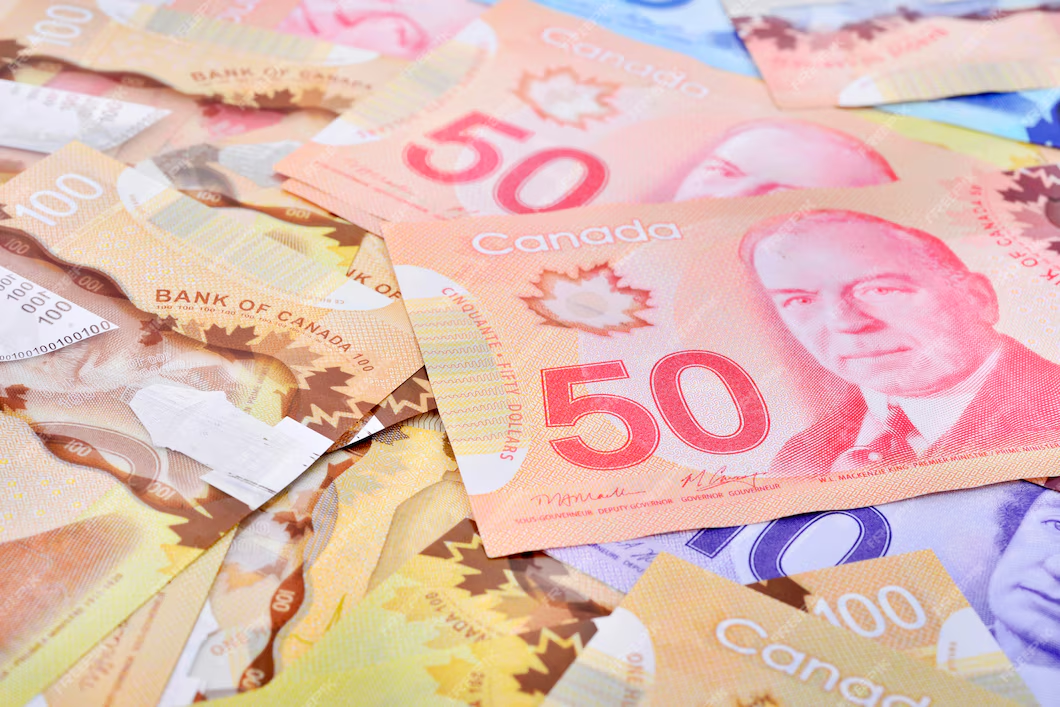The USD/CAD currency pair maintains its upward momentum, moving above 1.4350 and targeting the important psychological resistance of 1.4450. Technicals such as the 14-day Relative Strength Index (RSI) remaining above 50 and the pair above the nine- and 14-day Exponential Moving Averages (EMAs) validate a building short-term trend. A decisive breach above 1.4450 would set the stage for a retest of the 1.4793 level, last touched in March 2003. On the downside, initial support is at the nine-day EMA of 1.4286, and a breach below this would set the stage for a more significant correction towards the two-month low of 1.4151.
KEY LOOKOUTS
• USD/CAD continues in an uptrend, staying above major EMAs and boosted by RSI above 50, indicating potential extension to 1.4450 resistance.
• A strong break above the psychological level of 1.4450 has the potential to drive the pair to 1.4793, last visited in March 2003.
• Near-term support is at the nine-day EMA of 1.4286, with a breakdown below potentially prompting a move towards the two-month low of 1.4151.
• A failure to maintain gains above 1.4450 may erode bullish pressure, triggering a possible correction to the three-month low of 1.3927.
The USD/CAD currency pair remains in firm bullish mode on the back of its standing above dominant moving averages and the 14-day RSI remaining above 50. The near-term attention is at the psychological resistance level of 1.4450, with a clean break seen taking the pair up towards the 1.4793 level last recorded in March 2003. On the downside, the nine-day EMA level of 1.4286 acts as the first point of support, followed by the 14-day EMA level of 1.4284. A decline below these levels may undermine the short-term bullish perspective and direct the pair to the two-month low of 1.4151. The traders should be careful of a possible pullback if the pair is unable to hold above 1.4450, as it can create a more serious correction towards the three-month low of 1.3927.
USD/CAD continues to stay bullish, trading above important EMAs and bolstered by an RSI reading above 50. A break above 1.4450 would drive the pair towards 1.4793, and support at 1.4286 is important to avoid a further pullback.
• USD/CAD continues its winning streak, trading above important EMAs and holding a strong short-term bullish bias.
• The psychological level of importance at 1.4450 is the next target, with a break higher potentially paving the way to 1.4793.
• The nine-day EMA at 1.4286 is the nearest support, closely followed by the 14-day EMA at 1.4284.
• The 14-day Relative Strength Index (RSI) is still above 50, supporting the bullish outlook and potential for further gains.
• A break above 1.4450 may cause a retest of the 1.4793 level, last seen in March 2003.
• Failure of the pair to hold above 1.4450 may initiate a corrective decline to the two-month low of 1.4151.
• A more pronounced fall may test the three-month low of 1.3927, which is still a major support level for the long-term trend.
The USD/CAD currency pair remains to be of much interest as market forces determine its direction. Releases of economic data, interest rate measures, and international trade patterns are key to determining the performance of the currency pair. Economic stability and monetary policy decisions drive the strength of the U.S. dollar and influence its exchange rate with respect to the Canadian dollar. Further, Canada’s commodity-driven economy, relying heavily on energy exports such as oil, watches its currency waver with changes in the trend of the energy markets. This external impact affects USD/CAD’s trajectory and has USD/CAD under keen observation from traders and investors alike.
USD/CAD Daily Price Chart

Chart Source: TradingView
Political developments and domestic economic reports in both nations contribute further to the movement of USD/CAD. Market mood, investor sentiment, and risk appetite drive changes in demand for the Canadian and U.S. currencies. The bilateral trade relations between the two countries also contribute to the dynamics, with alterations in tariffs, free trade agreements, or cross-border investments affecting exchange rates. Moreover, employment figures, inflation readings, and consumption spending patterns of the U.S. and Canada indicate economic wellness, driving market expectations. Consequently, USD/CAD is still a major pair in the foreign exchange market, showing general economic trends and world financial conditions.
TECHNICAL ANALYSIS
USD/CAD is still firm as the pair continues to stay above important support levels, showing continued bullish momentum. The price continues to stay above the nine- and 14-day Exponential Moving Averages (EMAs), confirming short-term strength. Also, the 14-day Relative Strength Index (RSI) staying above 50 indicates continued buying pressure. The next important level of resistance is at 1.4450, a psychological level, with a breach likely to push the pair to higher levels. On the downside, support currently lies near the nine-day EMA at 1.4286, and a breach below this may signal a change in momentum. Overall, technical indicators reflect an upward bias, but traders should watch key levels for possible trend reversals.
FORECAST
USD/CAD’s bearish momentum is still intact, and the pair is looking towards the crucial resistance of 1.4450. A sustained crossover above this psychological level can open the doors towards higher levels, and the next big target is 1.4793, a level witnessed as recently as March 2003. The upward trend is bolstered by technicals and solid market sentiment, and the U.S. currency has been firm amid economic stability. If the buying pressure persists, USD/CAD may continue to appreciate as investors continue to be bullish on the pair’s long-term outlook.
On the bearish side, any inability to move above 1.4450 may initiate a corrective pullback, taking the pair to near-term support at 1.4286. A clear break below this level may undermine bullish momentum and take USD/CAD to the two-month low of 1.4151. Further downside pressure can develop if bearish sentiment intensifies, with the pair likely testing the three-month low of 1.3927. Market uncertainties, changing risk appetite, and external economic factors may play a role in reversing the situation, making these support levels very important for traders to monitor.







